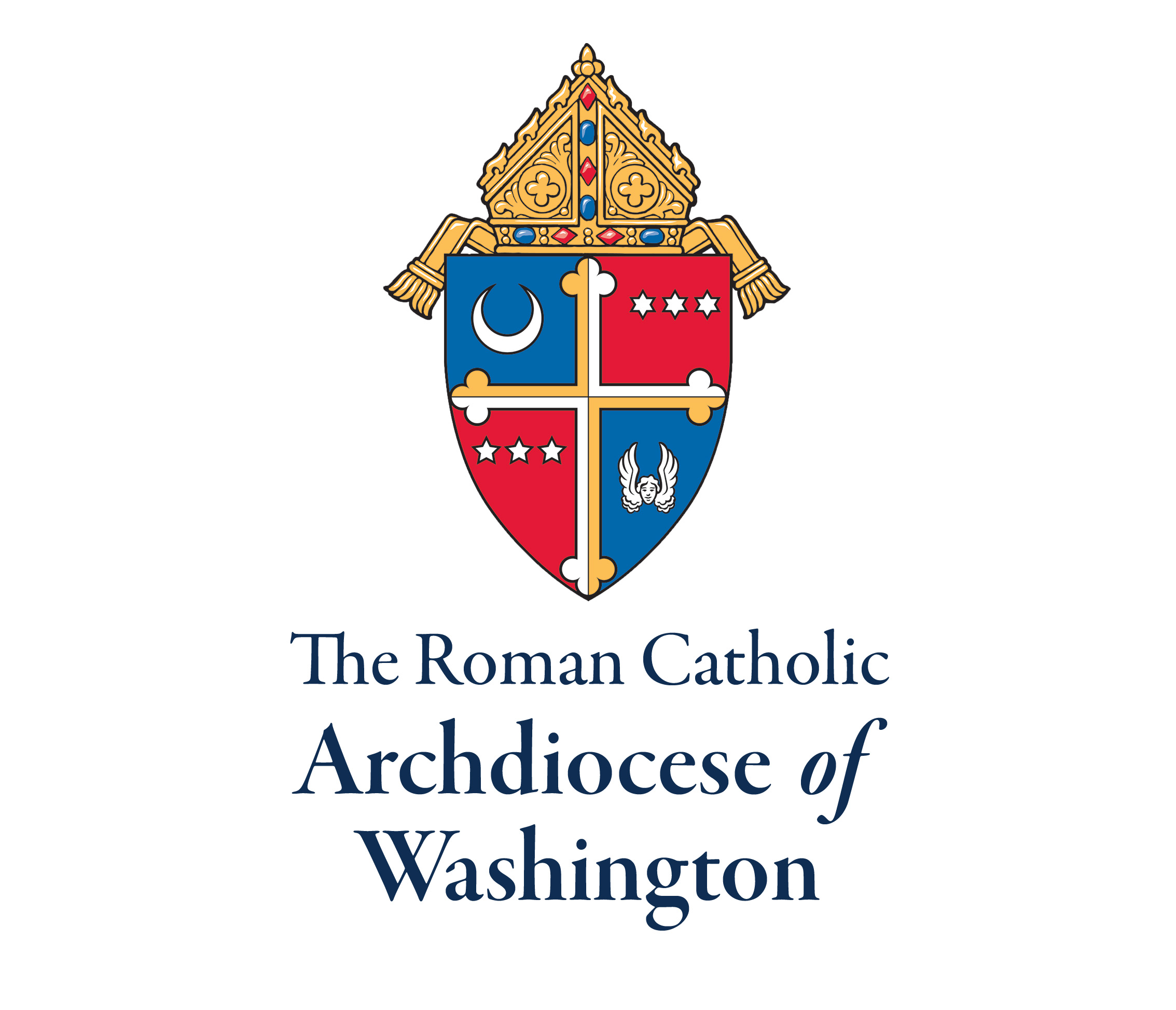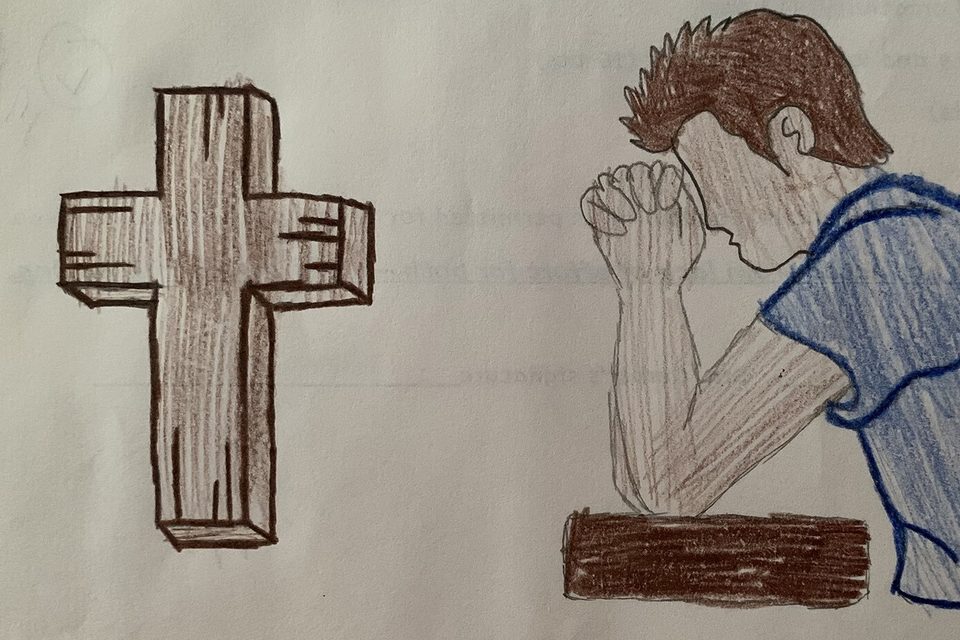January 1, New Year’s Day, is celebrated as the feast of St. Mary Mother of God. This solemnity has its origins in action taken by the Council of Ephesus in 431 A.D. to give Mary the title of Mother of God. One of the earliest parishes founded in the city of Washington in 1845 is dedicated to Mary the Mother of God. It began as the parish for German-speaking Catholics. In its early years it was staffed by the Redemptorist order that worked in many German-speaking parishes in the United States and had a foundation in Baltimore.
Beginning in 1838, Redemptorist priests, first a Father Peters and then later Father Czackert, traveled from Baltimore to support German Catholics in Washington. They met first at St. Peter’s Church on Capitol Hill. But after 1840, they moved to the basement of the new St. Matthew’s Church at 15th and H Streets, N.W. There were around 40 families in the church then. In 1843, Redemptorist Father Chackert came to lead the growing congregation. He had recently worked to found the Church of St. Philomena in Pittsburgh. Father Chackert worked with General John Peter Van Ness who donated a lot on 5th Street for the new church. Father Chackert also purchased other land in Square 518 that was adjacent to the Van Ness property.
In 1845, Father Mathias Alig was appointed pastor of St. Mary Mother of God Parish. He soon acquired temporary quarters for the parish in the form of a house on 8th Street, N.W. between M and L streets. Father Alig had been ordained for the Redemptorists in 1840 and came to the United States with four other priests. He went first to the new Diocese of Cincinnati where he became pastor of St. Peter’s in Norwalk, Ohio. He was later sent to Buffalo, New York before being moved to Baltimore in the fall of 1845.
Father Alig left the order sometime after 1855 and became a priest of the Archdiocese of Baltimore so that he could stay in Washington and minister to his congregation. The parish grew under the guidance of Father Alig and soon had more than 1,000 families. He remained pastor of this new parish named St. Mary Mother of God until his death on June 9, 1882.

Archbishop Samuel Eccleston of Baltimore laid the cornerstone of the new church on March 25, 1846. Speeches at the event were made by Father John Donelan, the first pastor of the Church of St. Matthew the Apostle, where the congregation met for several years, and by one of the Redemptorists from Baltimore whose name was not recorded.
The new church was built in less than a year and was ready for use in October. Father Alig also founded the first school for boys in 1853 and brought in the School Sisters of Notre Dame to oversee the school. The school continued until June of 1961 when it was closed. From September of 1961 until 1975 the building housed the Academy of Our Lady, which merged with St. Cecilia’s Academy.
A cemetery for the parish was also created in square 669, which is near the intersection of New York Avenue, Florida Avenue and First Street, N.E. That cemetery was in use until the 1870s. Father Alig acquired three acres of land in 1869 off of what is today Lincoln Road for a new, much larger cemetery. The new cemetery was in full use as of 1879 and was added to several times.
In 1890, under the leadership of a new pastor Father George Glaab, the parish built a new and larger church on its original lot. The building was designed by Ephraim Francis Baldwin, an architect from Baltimore known for his work for the Baltimore and Ohio Railroad. Baldwin also had numerous commissions for the Catholic Church, including designing both Caldwell Hall and McMahon Hall at The Catholic University of America and the Church of St. John the Evangelist at Forest Glen, Maryland. The project broke ground in April of 1890, and the new St. Mary Mother of God Church was completed in June of 1891. The entire project cost about $100,000 which would be just under three million dollars today.
By the 1930s, the situation inside the city of Washington had changed. People had begun moving to the suburbs, a process that would continue for the next 30 years. But also as the federal government expanded during the New Deal era, more real estate in downtown Washington was filled not with homes but with government office buildings. These changing dynamics made it difficult for the downtown urban parishes to thrive, and they had to come up with new ways to sustain their communities.
Father Charles J. Trinkaus, who was then pastor of St. Mary Mother of God Parish, instituted the Perpetual Novena to Our Lady of the Miraculous Medal on Jan. 8, 1934. In 1937, they began broadcasting it on the radio at 8 p.m. In 1970, the novena was being broadcast on 1220 AM at 11:30 a.m. every Monday. A shrine to the Miraculous Medal was completed inside the church in May of 1961. Presently the novena is held every Wednesday evening. At times, it was such a popular devotion that as many as 14 services were needed to make room for all the attendees.

The expansion of the federal government had another impact on St. Mary Mother of God Parish. A Chinese immigrant community that had been living down along Pennsylvania Avenue for nearly 80 years was displaced with the creation of Federal Triangle in 1931. They moved several blocks north to the area between 5th and 7th streets on the blocks between G Street and Massachusetts Avenue. By the 1950s, this community was flourishing, and a large group had become members of the parish. They actively participated in the life of the parish and sent their sons to the parish school. A Chinese-speaking priest was in residence to lead this community. Today a Mass is still celebrated every Sunday in Chinese there for the Our Lady of China Pastoral Mission.
The Church of St. Mary Mother of God has sustained one last transformation in its long history. On Dec. 27, 1988, Masses using the pre-1962 missal began being offered at St. Mary’s and at St. Francis de Sales in Benedict. In July of that year, St. Pope John Paul II had issued the Moto Proprio, Ecclesia Dei that encouraged the wider use of the Latin Mass used before the Second Vatican Council. Then-Cardinal James Hickey of Washington had authorized the Mass to be celebrated at these two parishes within the archdiocese.
Today a Latin Mass in what is now known as the Extraordinary Form is celebrated each Sunday there along with English Masses. After more than 175 years in existence, the Church of St. Mary Mother of God is still a vibrant downtown Catholic parish.
(Dr. Jacobe serves as the director of the Archives for the Archdiocese of Washington.)











